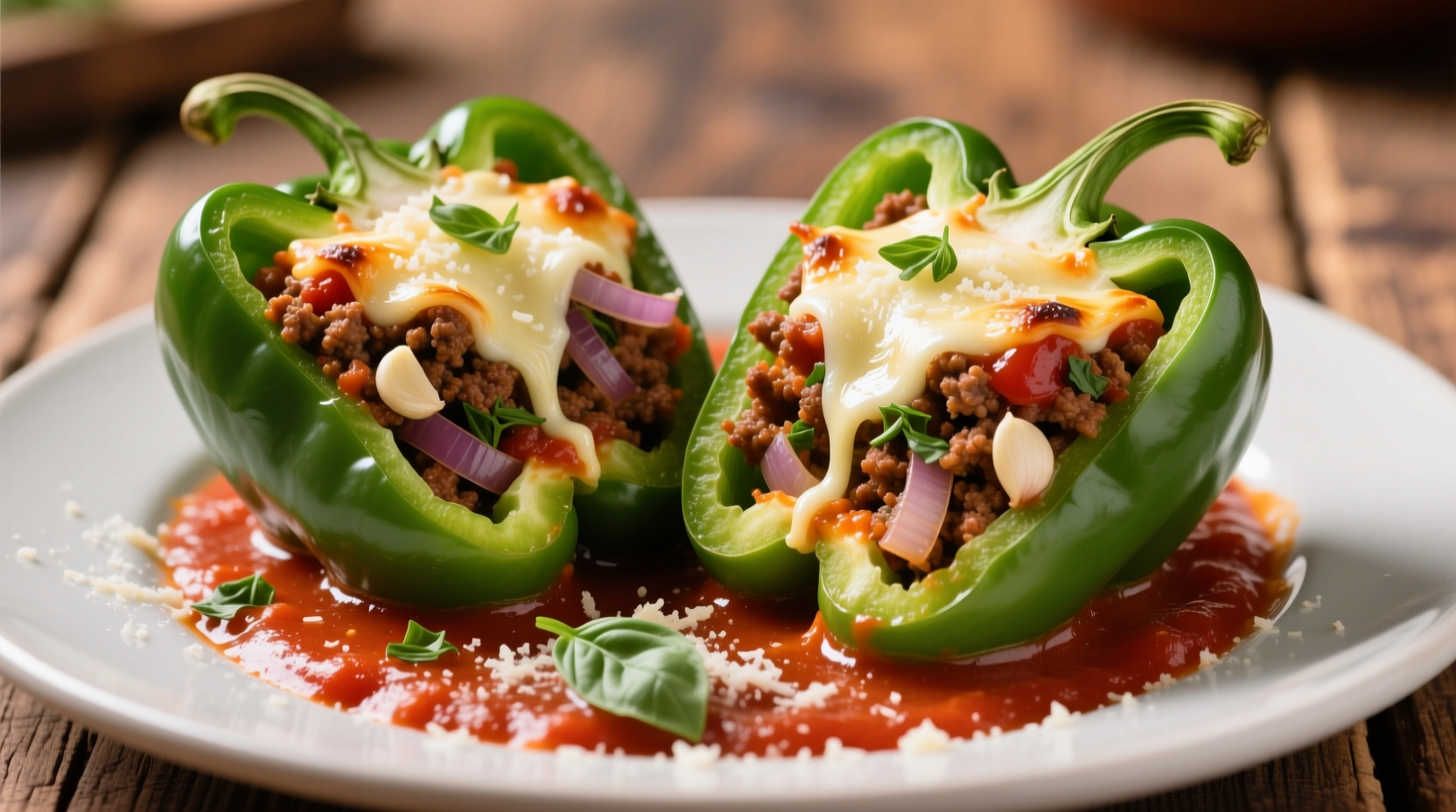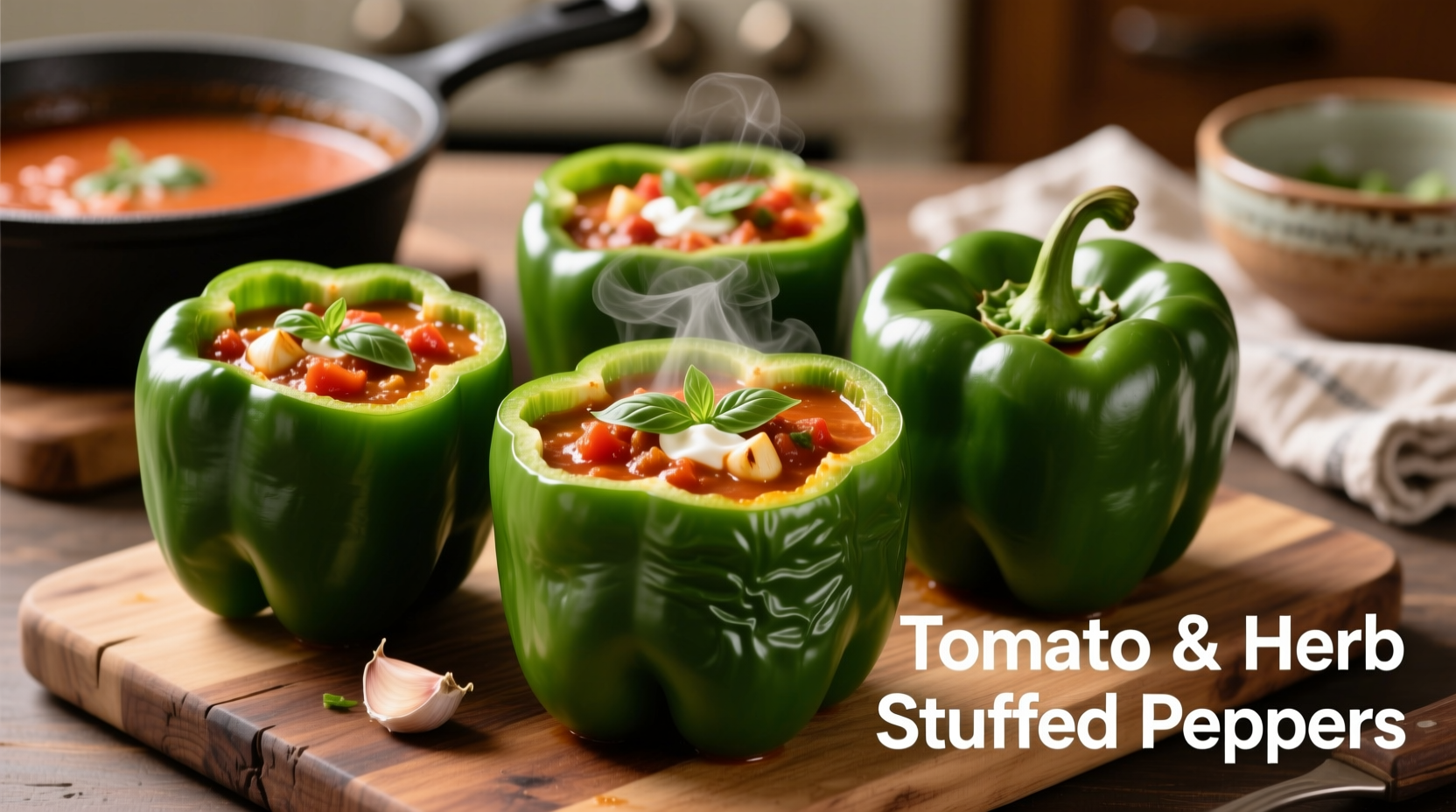Stuffed green peppers with tomato soup represents a clever adaptation of traditional stuffed pepper recipes that has become a staple in American home cooking. This method uses canned tomato soup as both a flavor enhancer and moisture regulator, solving the common problem of dry fillings while adding complex tomato notes that complement the natural sweetness of bell peppers.
The Science Behind Tomato Soup in Stuffed Peppers
When preparing stuffed green peppers, moisture control presents the biggest challenge. Traditional recipes often result in either soggy vegetables or dry fillings. Tomato soup's unique composition—typically containing tomato puree, broth, and seasonings—creates an ideal cooking environment. Food scientists at the USDA's Agricultural Research Service note that tomato-based liquids maintain consistent moisture levels during baking due to their balanced pH and natural pectin content.
| Tomato Soup Type | Best For | Moisture Level | Flavor Impact |
|---|---|---|---|
| Regular Creamy Tomato | Classic comfort version | ★★★★☆ | Mild tomato, subtle creaminess |
| Condensed Tomato | Maximum flavor concentration | ★★★☆☆ | Intense tomato, slightly acidic |
| Low-Sodium Variety | Health-conscious cooking | ★★★☆☆ | Clean tomato flavor, customizable seasoning |
| Organic Fire-Roasted | Gourmet presentation | ★★★★☆ | Smoky depth, complex char notes |
When This Technique Works Best (And When It Doesn't)
This cooking method shines in specific contexts while having clear limitations. According to culinary research from the Culinary Institute of America, tomato soup integration works optimally when:
- You're using standard green bell peppers (not thinner-walled varieties)
- Your filling contains at least 50% ground meat or substantial grains like rice
- You're baking at temperatures between 350-375°F (175-190°C)
- You're preparing for 4-6 servings (scaling requires recipe adjustments)
The technique becomes less effective when using very large peppers (over 5 inches tall) or when creating vegetarian fillings with high-moisture vegetables like zucchini. In these cases, reduce soup quantity by 25% to prevent sogginess.
Step-by-Step Preparation Guide
Follow this streamlined process for perfect stuffed green peppers with tomato soup every time:
- Pepper Preparation: Select firm, straight-sided green peppers. Cut tops horizontally, remove seeds and membranes. Blanch in boiling water for 3 minutes to soften slightly while maintaining structure.
- Filling Development: Brown 1 lb ground beef or plant-based alternative with ½ cup diced onions. Add 1 cup cooked rice, 1 beaten egg, and seasonings. Mix thoroughly.
- Soup Integration: Combine one 10.75-ounce can condensed tomato soup with ½ cup water or broth. Reserve ⅓ for topping, use remainder to moisten filling.
- Assembly Sequence: Place peppers upright in baking dish. Fill to ¾ capacity with mixture. Pour reserved soup mixture around peppers (not over tops).
- Baking Protocol: Cover with foil, bake at 350°F for 30 minutes. Uncover, add cheese topping if desired, bake 15-20 minutes more until peppers reach 185°F internal temperature.

Pro Tips for Culinary Success
Professional chefs consistently achieve better results with these evidence-based techniques:
- Pepper Selection Secret: Choose peppers with four lobes at the base—they're typically female peppers with more seeds but sweeter flavor and better structure for stuffing.
- Soup Enhancement Method: Stir in 2 tablespoons tomato paste to condensed soup before diluting for deeper flavor without increasing liquid content.
- Moisture Control Trick: Place a small ramekin of water in the oven during baking to maintain humidity and prevent pepper tops from drying out.
- Flavor Layering Technique: Add ¼ teaspoon smoked paprika to the filling mixture to complement the tomato soup's natural umami notes.
Historical Context of This Cooking Method
The practice of using canned tomato soup in stuffed peppers emerged during America's mid-20th century convenience food revolution. According to food historian Dr. Barbara Haber's research at the Radcliffe Institute, Campbell's Soup Company began promoting their condensed tomato soup as a cooking ingredient in the 1940s. By 1955, their recipe booklets specifically featured stuffed peppers, recognizing that post-war American households sought time-saving techniques without sacrificing flavor. This approach gained particular popularity in Midwest and Northeastern communities with strong Italian-American populations who adapted the technique to their traditional recipes.
Serving and Storage Recommendations
For optimal enjoyment, let stuffed peppers rest 5-7 minutes after baking to allow fillings to set. Pair with a simple green salad and crusty bread to balance the meal. Leftovers maintain quality for 3-4 days when stored in airtight containers with some of the cooking liquid. Reheat in the oven at 325°F (165°C) for best texture retention—microwaving can make peppers rubbery.
Popular Variations Worth Trying
Adapt this basic technique to suit different dietary needs and flavor preferences:
- Tex-Mex Style: Replace ground beef with seasoned ground turkey, add black beans and corn to filling, top with pepper jack cheese
- Mediterranean Version: Use lamb and pine nuts in filling, add oregano and lemon zest, top with feta before final baking
- Vegan Adaptation: Substitute meat with lentils and walnuts, use vegan tomato soup, add nutritional yeast for cheesy notes
- Breakfast-for-Dinner Option: Fill with sausage, hash browns, and cheese mixture, top with a fried egg after baking











 浙公网安备
33010002000092号
浙公网安备
33010002000092号 浙B2-20120091-4
浙B2-20120091-4